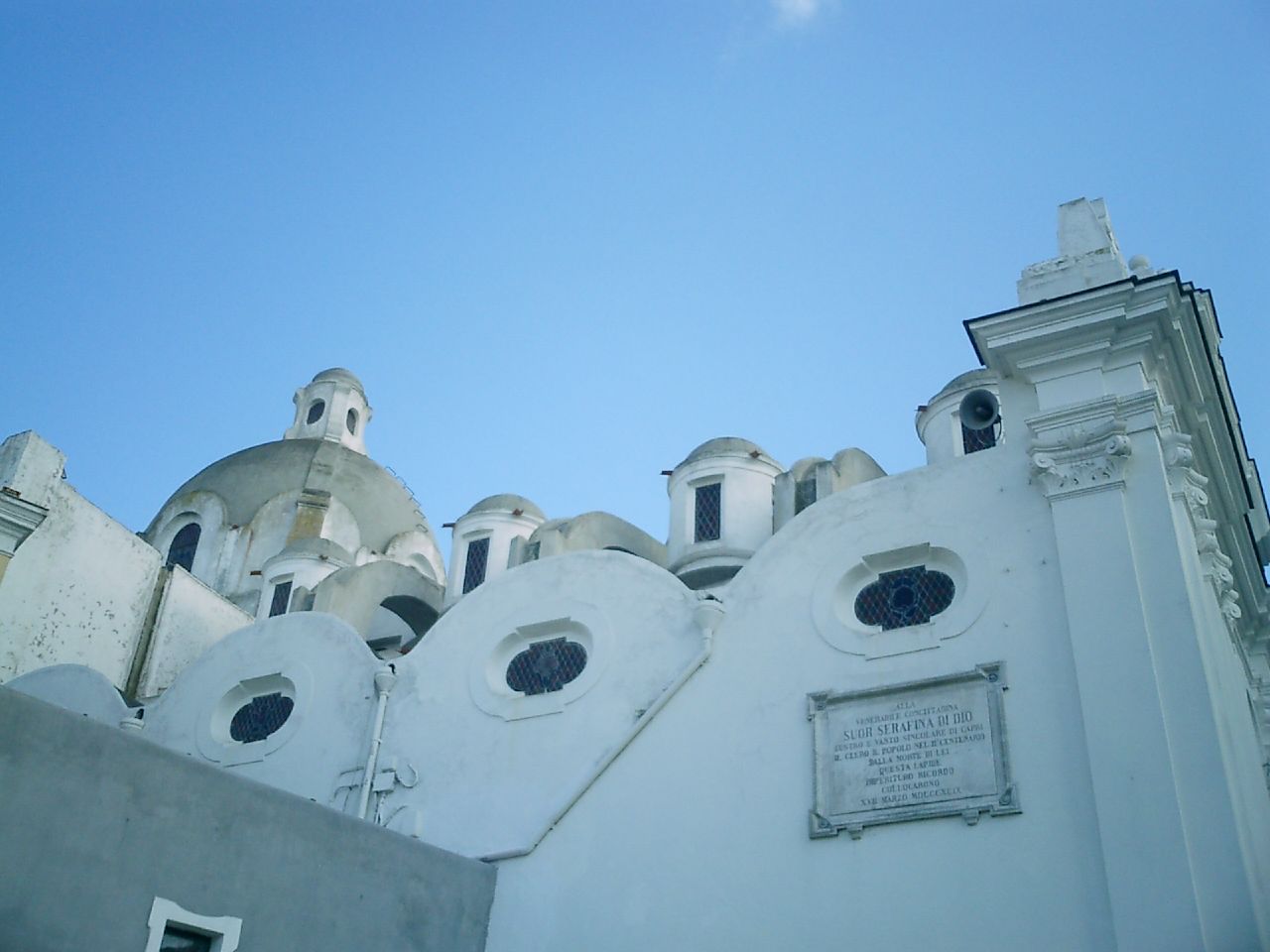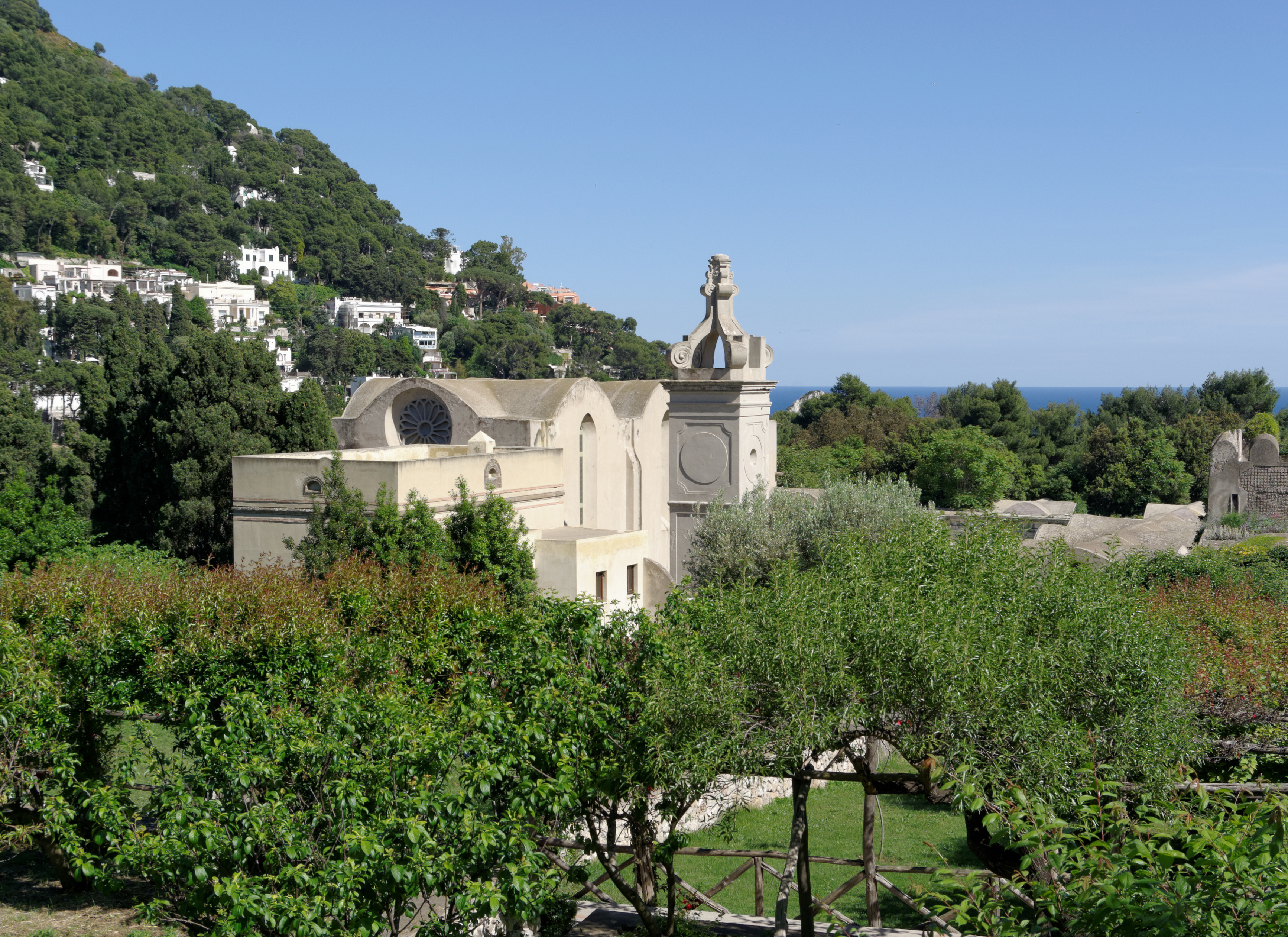|
Santo Stefano, Capri
Santo Stefano is a Catholic church and former cathedral on the island of Capri, Italy. Dedicated to Saint Stephen, it is the principal house of worship in the town of Capri (town), Capri. The religious complex was built around the Piazza Umberto I square in the seventeenth century. The archbishop's palace is now used as the town hall ("Municipio"). Santo Stefano and Chiesa di San Costanzo are the island's two oldest churches. References {{Capri topics 17th-century Roman Catholic church buildings in Italy Roman Catholic churches in Capri, Campania ... [...More Info...] [...Related Items...] OR: [Wikipedia] [Google] [Baidu] |
Catholic Church
The Catholic Church (), also known as the Roman Catholic Church, is the List of Christian denominations by number of members, largest Christian church, with 1.27 to 1.41 billion baptized Catholics Catholic Church by country, worldwide as of 2025. It is among the world's oldest and largest international institutions and has played a prominent role in the history and development of Western civilization.Gerald O'Collins, O'Collins, p. v (preface). The church consists of 24 Catholic particular churches and liturgical rites#Churches, ''sui iuris'' (autonomous) churches, including the Latin Church and 23 Eastern Catholic Churches, which comprise almost 3,500 dioceses and Eparchy, eparchies List of Catholic dioceses (structured view), around the world, each overseen by one or more Bishops in the Catholic Church, bishops. The pope, who is the bishop of Rome, is the Papal supremacy, chief pastor of the church. The core beliefs of Catholicism are found in the Nicene Creed. The ... [...More Info...] [...Related Items...] OR: [Wikipedia] [Google] [Baidu] |
Cathedral
A cathedral is a church (building), church that contains the of a bishop, thus serving as the central church of a diocese, Annual conferences within Methodism, conference, or episcopate. Churches with the function of "cathedral" are usually specific to those Christian denominations with an episcopal hierarchy, such as the Catholic Church, Catholic, Eastern Orthodox Church, Eastern Orthodox, Anglicanism, Anglican, and some Lutheranism, Lutheran churches.''New Standard Encyclopedia'', 1998 by Standard Educational Corporation, Chicago, Illinois; page B-262c. Church buildings embodying the functions of a cathedral first appeared in Italy, Gaul, Spain, and North Africa in the 4th century, but cathedrals did not become universal within the Western Catholic Church until the 12th century, by which time they had developed architectural forms, institutional structures, and legal identities distinct from parish churches, monastery, monastic churches, and episcopal residences. The cathedra ... [...More Info...] [...Related Items...] OR: [Wikipedia] [Google] [Baidu] |
Capri
Capri ( , ; ) is an island located in the Tyrrhenian Sea off the Sorrento Peninsula, on the south side of the Gulf of Naples in the Campania region of Italy. A popular resort destination since the time of the Roman Republic, its natural beauty, historic sites, and upscale tourism have made it famous worldwide. The island is characterized by its rugged limestone landscape, sea stacks (Faraglioni), coastal grottoes including the renowned Blue Grotto (Capri), Blue Grotto, and high cliffs overlooking the sea. Notable features include the harbours of Marina Grande, Capri, Marina Grande and Marina Piccola, the panoramic Belvedere of Tragara, the ruins of Roman imperial villas such as Villa Jovis, and the towns of Capri (town), Capri and Anacapri, the latter situated higher up the slopes of Monte Solaro, the island's highest point. Administratively, Capri is part of the Metropolitan City of Naples within the Campania region. The island is divided into two municipalities (''comuni''): ... [...More Info...] [...Related Items...] OR: [Wikipedia] [Google] [Baidu] |
Italy
Italy, officially the Italian Republic, is a country in Southern Europe, Southern and Western Europe, Western Europe. It consists of Italian Peninsula, a peninsula that extends into the Mediterranean Sea, with the Alps on its northern land border, as well as List of islands of Italy, nearly 800 islands, notably Sicily and Sardinia. Italy shares land borders with France to the west; Switzerland and Austria to the north; Slovenia to the east; and the two enclaves of Vatican City and San Marino. It is the List of European countries by area, tenth-largest country in Europe by area, covering , and the third-most populous member state of the European Union, with nearly 59 million inhabitants. Italy's capital and List of cities in Italy, largest city is Rome; other major cities include Milan, Naples, Turin, Palermo, Bologna, Florence, Genoa, and Venice. The history of Italy goes back to numerous List of ancient peoples of Italy, Italic peoples—notably including the ancient Romans, ... [...More Info...] [...Related Items...] OR: [Wikipedia] [Google] [Baidu] |
Saint Stephen
Stephen (; ) is traditionally venerated as the protomartyr or first martyr of Christianity."St. Stephen the Deacon" , St. Stephen Diaconal Community Association, Roman Catholic Diocese of Rochester. According to the Acts of the Apostles, he was a deacon in the early church at Jerusalem who angered members of various synagogues by his teachings. Accused of blasphemy at his trial, he made a speech denouncing the Jewish authorities who were sitting in judgment on him and was then stoned to death. Paul the Apostle, Saul of Tarsus, a Pharisee and Roman citizen who would later become an Apostles in the New Testament, apostle, participated in Stephen's execution. The only source for information about Stephen is the New Testament book of the Acts of the Apostles. Stephen is mentioned in Acts 6 as on ... [...More Info...] [...Related Items...] OR: [Wikipedia] [Google] [Baidu] |
Capri (town)
Capri is a municipality in the Metropolitan City of Naples situated on the island of Capri in Italy. It comprises the centre and east of the island, while the west belongs to Anacapri. Main sights Sights in the municipality include Via Camerelle, Via Krupp, Faraglioni, Arco Naturale, Villa Lysis, Villa Malaparte. The Palazzo a Mare are the most extensive Roman remains upon Capri's littoral zone. * Marina Grande, port of Capri * Piazza Umberto I, the Piazzetta * Certosa di San Giacomo, with a view to the port Marina Piccola * Villa Jovis Churches * Chiesa di San Costanzo * Chiesa di Santo Stefano * Chiesa di Sant'Anna *Chiesa di S. Michele *Chiesa di S. Maria del soccorso *Chiesa di S. Andrea *Chiesa di Costantinopoli * Cimitero acattolico di Capri Economy The international luxury linen clothing brand 100% Capri opened its first boutique in Capri in 2000. Transport There are ferries and hydrofoil to the port of Capri from Naples' ports of Mergellina and Molo Beverello, ... [...More Info...] [...Related Items...] OR: [Wikipedia] [Google] [Baidu] |
Piazza Umberto I
Piazza Umberto I (or Piazza Umberto Primo from the 1930s, La Piazzetta, meaning "little square"; nicknamed, "the little theater of the world") is the most famous square of the island of Capri, Italy. The square is located in the historic center of Capri, in the eponymous town Capri (town), Capri, on the eastern end of the island, and since Roman times, it has been considered the center of the town and the meeting point of the island by both residents and others. History The Santo Stefano (Capri), church of Santo Stefano was built in the eighteenth century and was converted into a cathedral when the Roman Catholic Diocese of Capri, Bishop of Capri established his seat there. A staircase was added to connect the church with the square and the bishop's residence, now the town hall. The bishopry remained until 1818 when, by order of Pope Pius VII, the diocese was suppressed and Capri was absorbed into the Diocese of Sorrento. The square was already well developed as the center of loc ... [...More Info...] [...Related Items...] OR: [Wikipedia] [Google] [Baidu] |
Chiesa Di San Costanzo
The Chiesa di San Costanzo (Church of Constantius) is a monumental church of Capri. Named after the patron saint of the island of Capri, San Costanzo, it was the cathedral of the Roman Catholic Diocese of Capri from 987–1560. History The exact date of construction of the church is still unknown but it is one of the oldest on the Island of Capri. Some historians believe its origins could date to the fifth century as it appears to be built on the ruins of a Roman building from the Late Republican period consisting of eight columns and two apses. Others state it may have been built between the ninth and the twelfth centuries. However, an early church certainly existed when the Diocese of Capri was created in 987. At the time, its early Christian character had been completely revamped as a Byzantine church with a plan in the form of a Greek cross. Originally it was dedicated to San Severino and only after the death of San Costanzo, in the seventh century, was it renamed. There w ... [...More Info...] [...Related Items...] OR: [Wikipedia] [Google] [Baidu] |
17th-century Roman Catholic Church Buildings In Italy
The 17th century lasted from January 1, 1601 (represented by the Roman numerals MDCI), to December 31, 1700 (MDCC). It falls into the early modern period of Europe and in that continent (whose impact on the world was increasing) was characterized by the Baroque cultural movement, the latter part of the Spanish Golden Age, the Dutch Golden Age, the French '' Grand Siècle'' dominated by Louis XIV, the Scientific Revolution, the world's first public company and megacorporation known as the Dutch East India Company, and according to some historians, the General Crisis. From the mid-17th century, European politics were increasingly dominated by the Kingdom of France of Louis XIV, where royal power was solidified domestically in the civil war of the Fronde. The semi-feudal territorial French nobility was weakened and subjugated to the power of an absolute monarchy through the reinvention of the Palace of Versailles from a hunting lodge to a gilded prison, in which a greatly expande ... [...More Info...] [...Related Items...] OR: [Wikipedia] [Google] [Baidu] |





